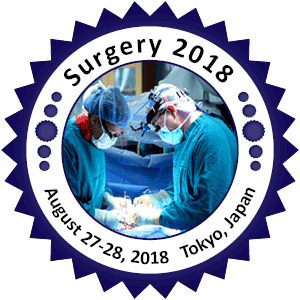
Chao Li
Department of Head and Neck Surgery, Sichuan Cancer Centre
Title: Surgical Management of Locally Advanced, Differentiated Thyroid Cancer
Biography
Biography: Chao Li
Abstract
Objectives: The incidence of Differentiated Thyroid Cancers DTC in China is increasing, and this has been attributed to increased diagnosis of early stage disease by Ultrasound. In addition to an increase in early stage Cancer, a simultaneous increase in the Locally Advanced disease such as larger tumours (>4 cm), adverse features, and extrathyroid extension (ETE) .it presents an operative challenge for both the clinician and patient. The aim of this study is to report our experience at the Sichuan Cancer Centre; with the management of locally advanced DTC and to further analyse factors predictive of outcome within this group.
Methods: Overall survival outcomes were not analysed due to the relatively slow disease progression in thyroid cancer. Disease-specific survival (DSS) was calculated from the time of cancer diagnosis to the date of first disease recurrence. Distant recurrence-free probability (DRFP) was calculated from diagnosis to date of first distant disease recurrence, while locoregional recurrence-free probability (LRRFP) was calculated from diagnosis to the date of first thyroid bed or cervical lymph node recurrence. The median follow-up was 53 months (range 1–270 months).Outcomes data were calculated at 5 years. Recurrence events were recorded for all patients. Because progression of local disease in patients who had an R2 resection is not comparable with patients with R0 and R1 resections, patients with R2 resections were excluded from analysis of locoregional recurrence. Statistical analysis was carried out using SPSS (Version 21, IBM Corp, Armonk, NY).Variables were compared between R0, R1, and R2 groups using the Pearson χ2 test. DSS, DRFP, and LRRFP were analysed using the Kaplan-Meier method. Factors predictive of outcome were determined by univariate analysis using the log-rank test and by multivariate analysis using the Cox proportional hazards method.
Results: A total of 137 patients underwent total thyroidectomy, 35 had thyroid lobectomy, and 6 patients underwent subtotal thyroidectomy with a portion of the contralateral lobe preserved. The median age of the 122 patients with extra thyroidal DTC was 43 years (range 9–82 years), 50 men and 72women. 21 patients were M1, and 101 patients were considered M0 after initial therapy. Nine of the M1 patients were identified preoperatively and 16 postoperatively on RAI scan within 5 months of thyroidectomy. With a median follow-up of 60.1months (range 1–270 months), 41 patients died, 15of whom died with active disease. There were 4 local recurrences, 18 cervical nodal recurrences, and 17 distant recurrences.
Conclusions: Locally advanced (T4) DTC is rare. The gross ETE predicts worse survival. In patients with T3 disease due to minimal extension to the overlying strap muscles, end block removal of strap muscles with the underlying thyroid gland achieves equivalent outcomes to patients with T1/T2 disease. The approach, accurate,preoperative assessment of patients with suspected advanced DTC is crucial. Assessment includes identifying a history of changes in voice, compromise of the airway, dysphagia, or hemoptysis. The examination should include looking for a mass fixed to the airway, paralysis of the vocal cord, or intraluminal disease visible on flexible laryngoscopy. Preoperative investigation should include US routinely. For this reason, multidisciplinary management teams must select the most appropriate treatment strategies to optimize both oncologic and functional outcome.

